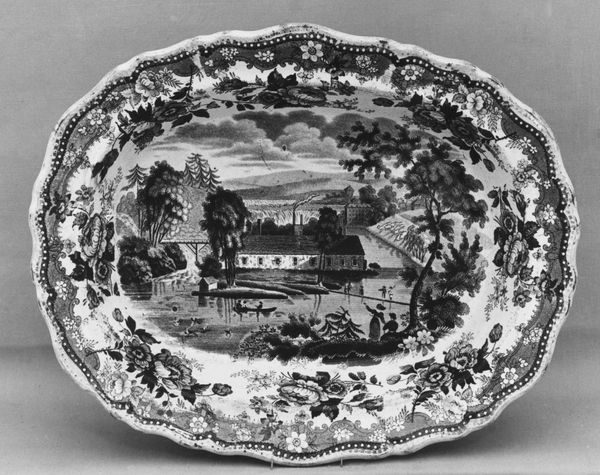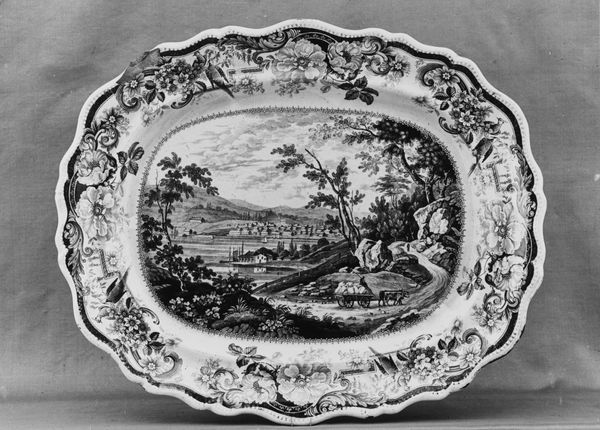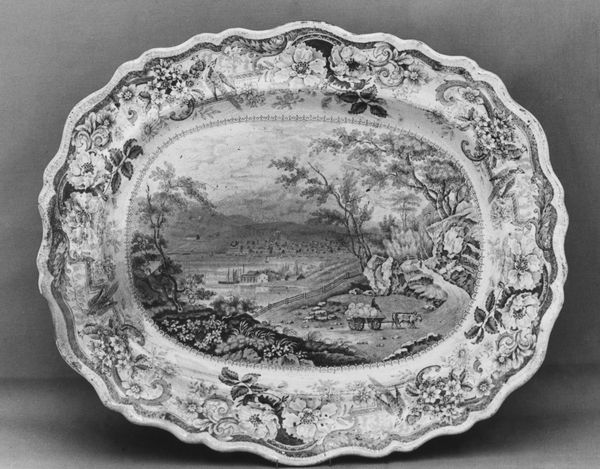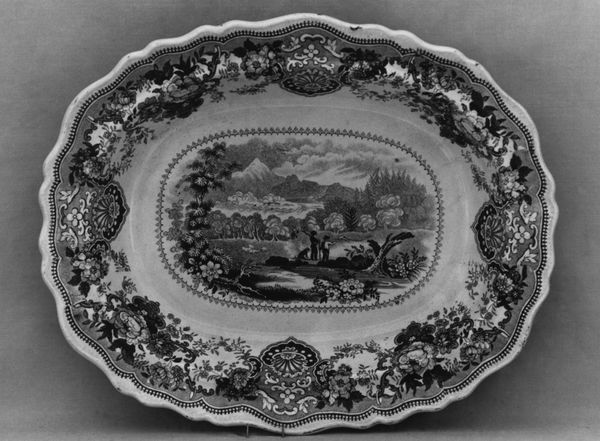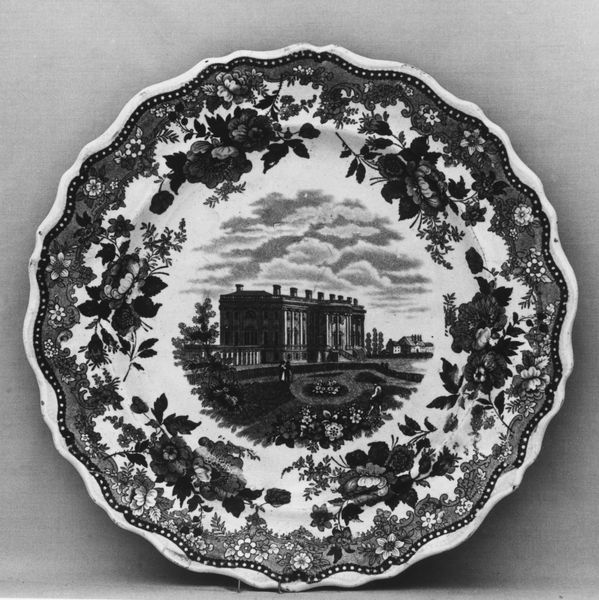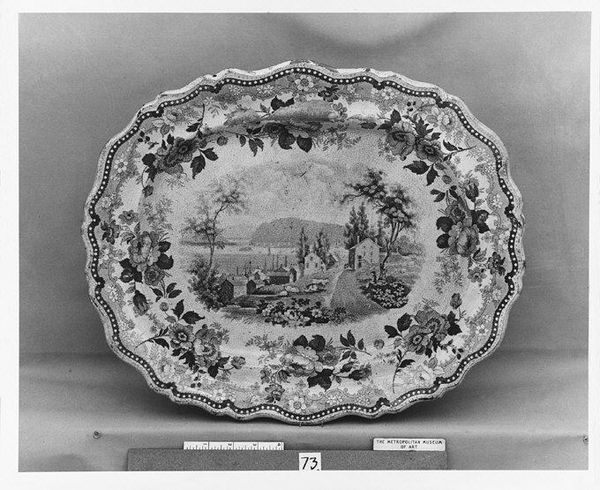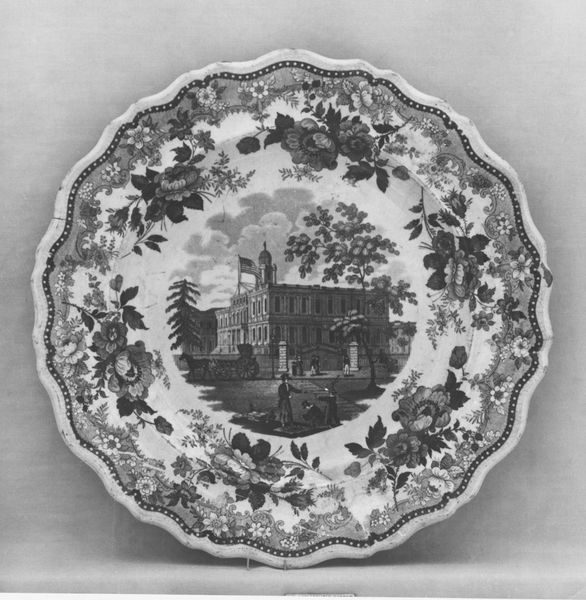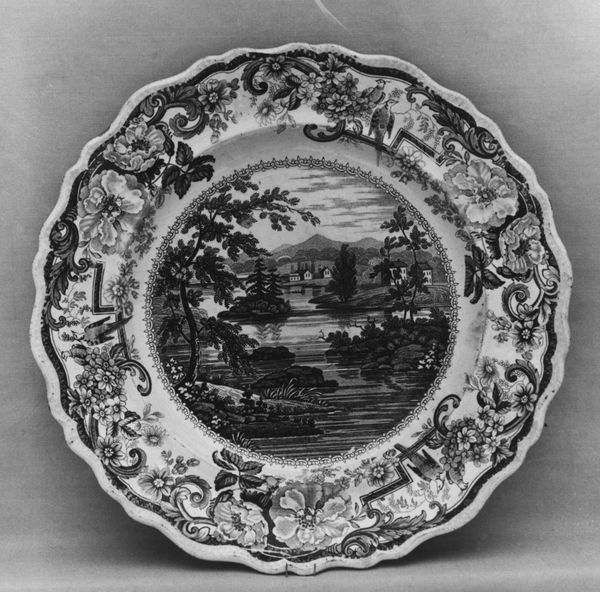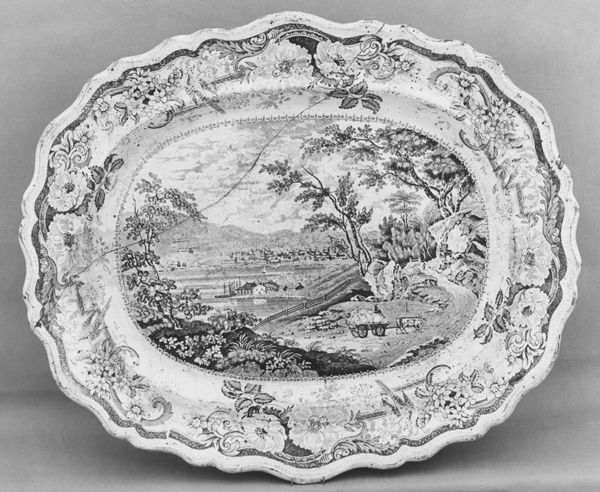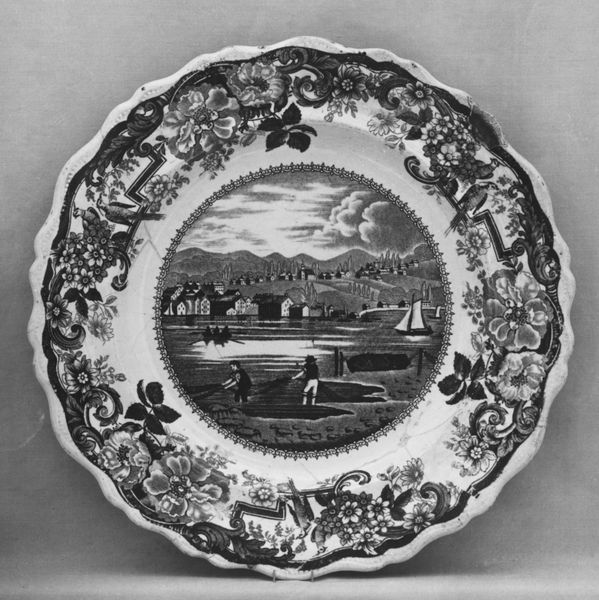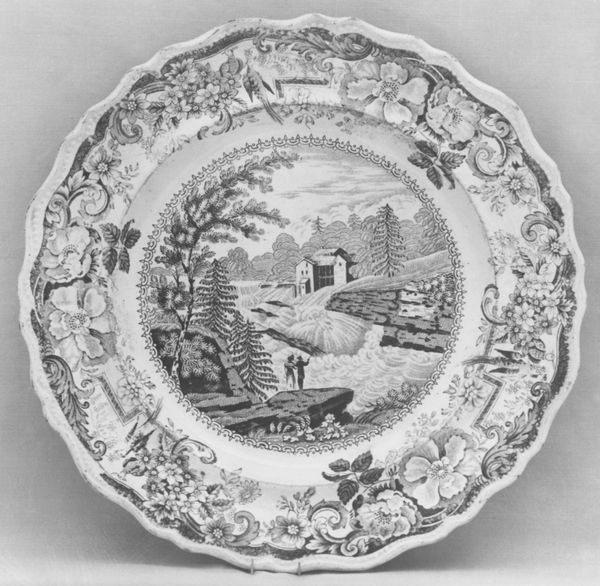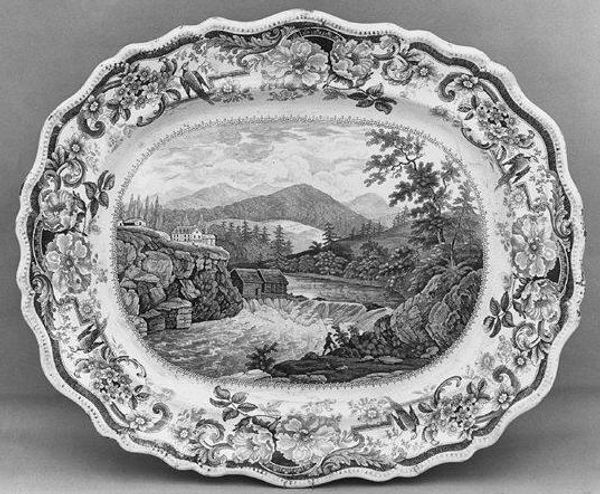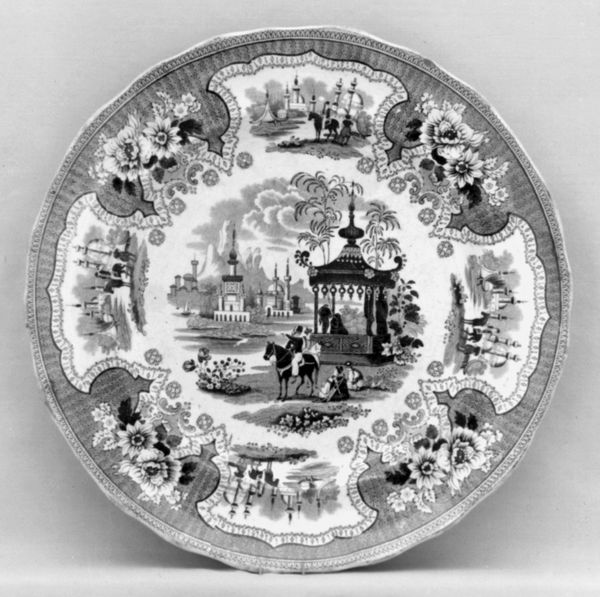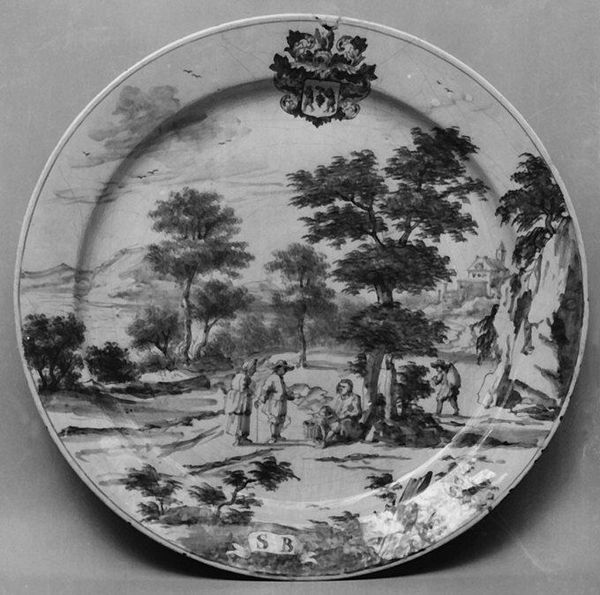
print, ceramic
# print
#
landscape
#
ceramic
#
decorative-art
Dimensions: 12 3/4 x 15 1/2 in. (32.4 x 39.4 cm)
Copyright: Public Domain
This platter was made by Job and John Jackson around 1830, from Staffordshire, England. It's made of earthenware, transfer-printed with a picturesque scene and floral border. The design was likely etched into a copper plate, inked, and then pressed onto thin tissue paper. This tissue was then carefully applied to the ceramic surface before firing, leaving a monochrome image. The process allowed for the mass production of decorated ceramics, making them accessible to a wider market. The Jackson brothers, like many Staffordshire potters, capitalized on the demand for affordable, decorative tableware in both domestic and international markets. The scene itself is a romanticized view of the American landscape, catering to a consumer base eager for exotic imagery. The platter embodies the industrial revolution, with mechanization enabling a global trade in ceramics, transforming both production and consumption. Considering the material and method, we see this platter as more than just a utilitarian object.
Comments
No comments
Be the first to comment and join the conversation on the ultimate creative platform.
